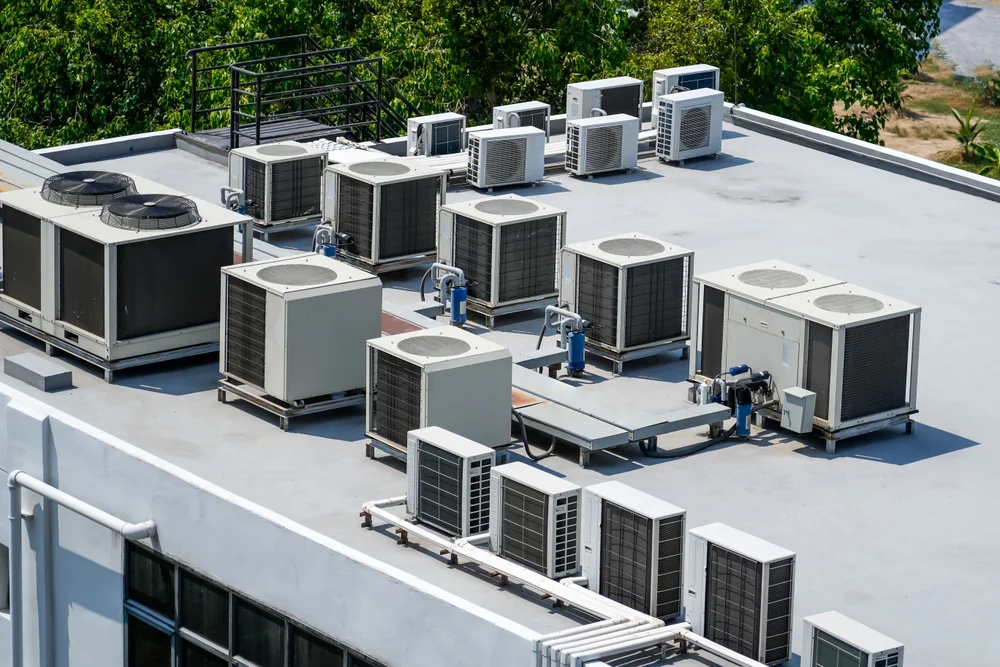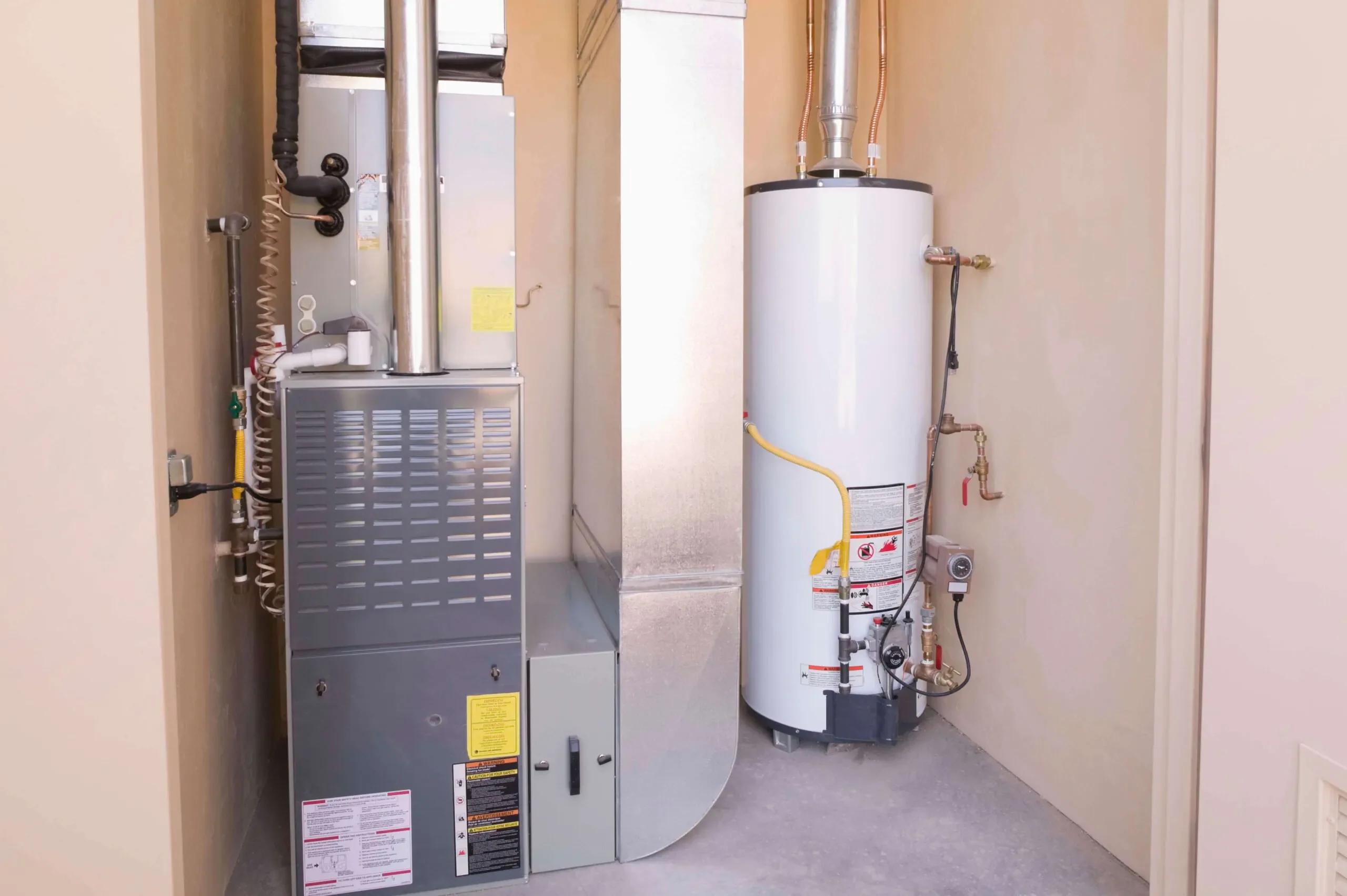Summary:
Why Seasonal HVAC Preparation Matters
Your HVAC system isn’t designed to flip a switch and instantly adapt to new demands. When seasons change, different components kick into high gear while others take a break. This transition period is when most problems surface.
Think about it—your air conditioner has been working overtime through a brutal Texas summer, and suddenly you’re asking your heating system to fire up after months of sitting idle. Without preparation, you’re asking for trouble. Systems that aren’t seasonally maintained use up to 25% more energy and face a 95% higher risk of unexpected breakdowns.
Spring HVAC Maintenance Tasks
Spring is your system’s wake-up call after winter. This is when you prepare for the upcoming cooling season, and getting ahead of potential issues now saves you from sweltering through summer breakdowns.
Start with your air filters. After months of heating system use, filters collect dust, debris, and allergens that restrict airflow. Replace them now, and plan to check them monthly during peak season. Dirty filters force your system to work harder, driving up energy costs and reducing indoor air quality.
Next, clear debris from around your outdoor unit. Winter leaves, branches, and accumulated dirt block airflow and reduce efficiency. Give your condenser at least two feet of clearance on all sides. While you’re outside, check for any obvious damage to the unit—bent fins, loose panels, or signs of refrigerant leaks.
Don’t forget your thermostat. Switch it to cooling mode and test it at different temperatures to ensure it’s responding correctly. If you’re still using an older manual thermostat, spring is an excellent time to upgrade to a programmable model that can save you 10-15% on energy costs.
Finally, schedule professional HVAC maintenance before the heat hits. Technicians can check refrigerant levels, clean coils, test electrical connections, and catch small issues before they become expensive problems.
Fall HVAC System Preparation
Fall preparation is about getting your heating system ready for Texas’s unpredictable winter weather. Even though our winters are generally mild, those occasional cold snaps can catch unprepared systems off guard.
Start by switching your thermostat to heating mode and testing it at various temperatures. Listen for unusual noises when the system starts up—grinding, squealing, or banging sounds indicate components that need attention before you rely on them during cold weather.
Replace air filters again, just as you did in spring. Your cooling system has been working hard, and filters have accumulated months of dust and debris. Clean filters ensure proper airflow for your heating system and improve indoor air quality during months when windows stay closed.
Check your home’s insulation and weatherstripping around windows and doors. Poor insulation forces your heating system to work harder and run longer, driving up energy costs. Seal gaps and add weatherstripping where needed—it’s one of the most cost-effective ways to improve efficiency.
For gas furnaces, visually inspect the area around your unit. Ensure nothing flammable is stored nearby, and check that vents and exhaust pipes are clear of obstructions. If you smell gas or notice a yellow flame instead of blue, shut off the system immediately and call a professional.
Schedule professional heating system maintenance in early fall, before the first cold snap. Technicians can inspect heat exchangers, test safety controls, clean burners, and ensure your system is ready for whatever winter brings.
Essential Maintenance Tasks for Year-Round Efficiency
Beyond seasonal preparation, certain maintenance tasks keep your system running efficiently throughout the year. These aren’t complicated procedures, but they make a significant difference in performance and longevity.
Monthly filter checks top the list. In Texas, with our dust, pollen, and varying humidity levels, filters work overtime. Check them monthly and replace when they look dirty—usually every 1-3 months depending on your home’s conditions. Homes with pets or allergy sufferers may need more frequent changes.
Keep outdoor units clean year-round. Hose down the condenser coils quarterly to remove dirt and debris that reduces efficiency. Trim vegetation to maintain proper clearance, and remove leaves or grass clippings that accumulate around the unit.
Professional Maintenance vs DIY Tasks
Understanding what you can handle yourself versus what requires professional expertise saves money while keeping your system safe and efficient.
Homeowners can manage basic tasks like changing filters, cleaning around outdoor units, and adjusting thermostat settings. You can also keep vents unblocked, replace thermostat batteries, and monitor your system for unusual noises or performance changes.
However, professional maintenance is essential for tasks involving electrical components, refrigerant handling, or gas connections. Technicians have the tools and training to safely inspect heat exchangers, test electrical connections, measure refrigerant levels, and calibrate system controls.
Professional maintenance also protects your warranty. Most manufacturers require annual professional service to maintain warranty coverage. Skip it, and you could void your warranty, leaving you responsible for expensive repairs that would otherwise be covered.
The investment in professional maintenance pays for itself. Every dollar spent on preventive maintenance saves $3-5 in repair costs over time. More importantly, maintained systems last 5-10 years longer than neglected ones, and they run 15-25% more efficiently.
Consider the cost of emergency repairs—they typically run 50-100% more than standard service calls. A seasonal maintenance visit costs a fraction of what you’d pay for an emergency repair during peak season when your system fails and you need it most.
Signs Your System Needs Immediate Attention
Certain warning signs indicate your HVAC system needs professional attention before the next season arrives. Recognizing these early can prevent complete system failure and expensive emergency repairs.
Unusual noises are often the first indicator of problems. Grinding, squealing, or banging sounds suggest worn components that could fail without warning. Rattling might indicate loose parts, while clicking sounds could signal electrical issues.
Inconsistent temperatures throughout your home suggest airflow problems, duct issues, or system imbalances. If some rooms are significantly warmer or cooler than others, your system isn’t distributing air properly.
Rising energy bills without increased usage indicate declining efficiency. Systems that struggle to maintain temperature work harder and consume more energy. This often happens gradually, making it easy to miss until bills become noticeably higher.
Poor indoor air quality—increased dust, stuffiness, or humidity issues—suggests your system isn’t filtering or circulating air effectively. This impacts comfort and health, particularly for family members with allergies or respiratory conditions.
Short cycling, where your system turns on and off frequently, indicates problems with system sizing, thermostat calibration, or component malfunction. This pattern wastes energy and puts excessive wear on components.
If you notice any of these signs, don’t wait for the next season to address them. Early intervention prevents minor issues from becoming major problems and ensures your system is ready when weather demands change.
Keep Your System Ready for Any Season
Seasonal HVAC preparation isn’t just about preventing breakdowns—it’s about ensuring your family’s comfort while protecting one of your home’s most important investments. Regular maintenance keeps systems running efficiently, extends equipment life, and prevents those expensive emergency calls that always seem to happen at the worst possible times.
The key is staying ahead of seasonal demands rather than reacting to problems. Simple tasks like changing filters and clearing debris make a real difference, while professional maintenance catches issues before they become costly repairs. Remember, every dollar spent on preventive care saves several dollars in future repair costs.
When you’re ready to ensure your HVAC system is prepared for changing seasons, we bring over 20 years of experience serving San Antonio families. Our veteran-owned team understands Texas weather challenges and provides the reliable maintenance your system needs to keep your family comfortable year-round.




